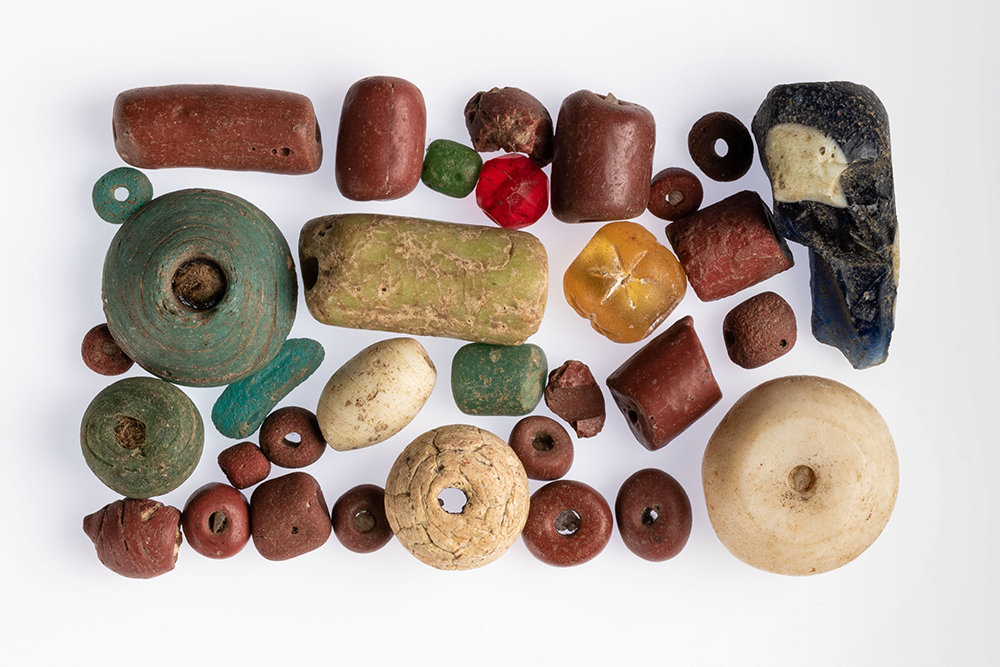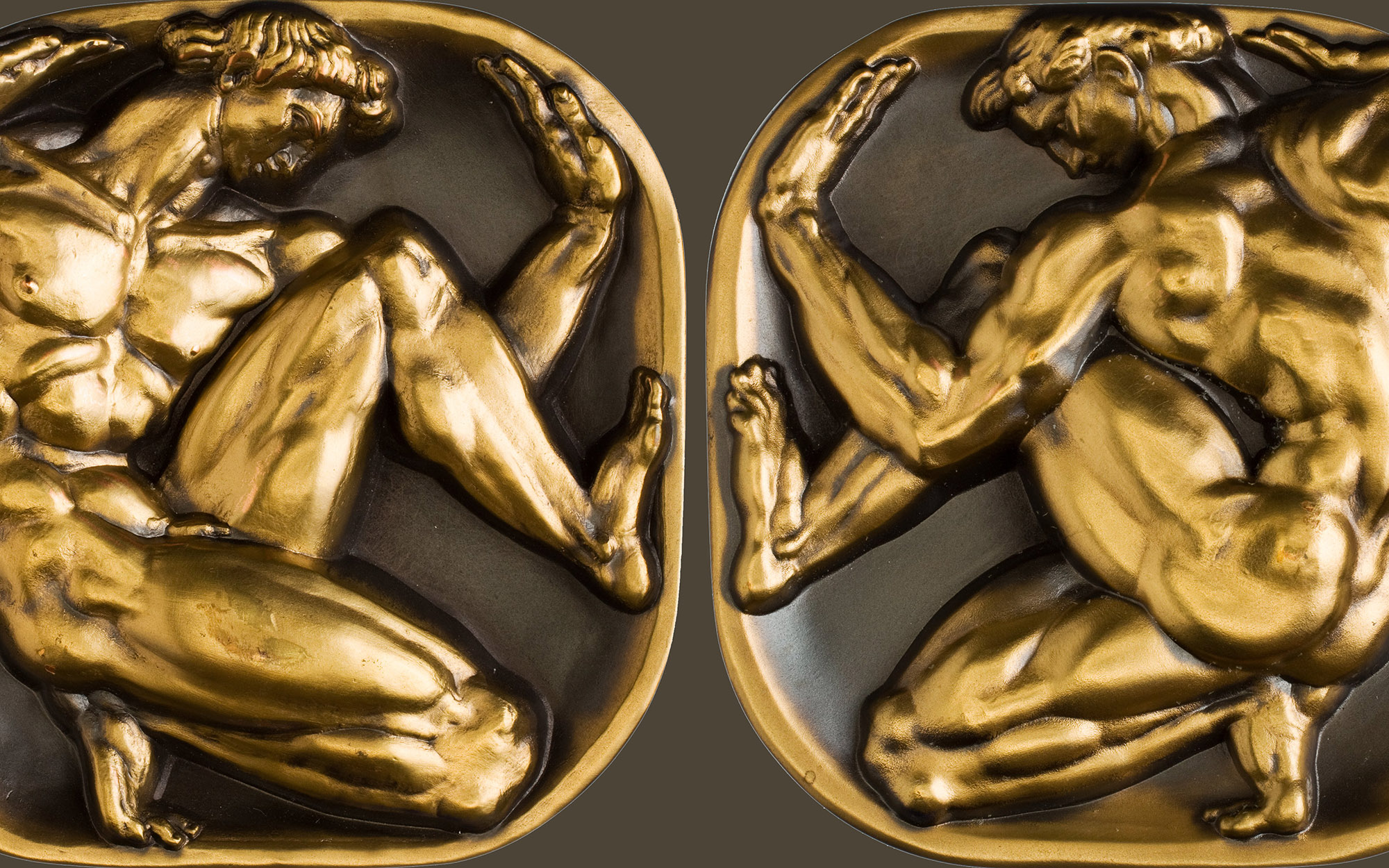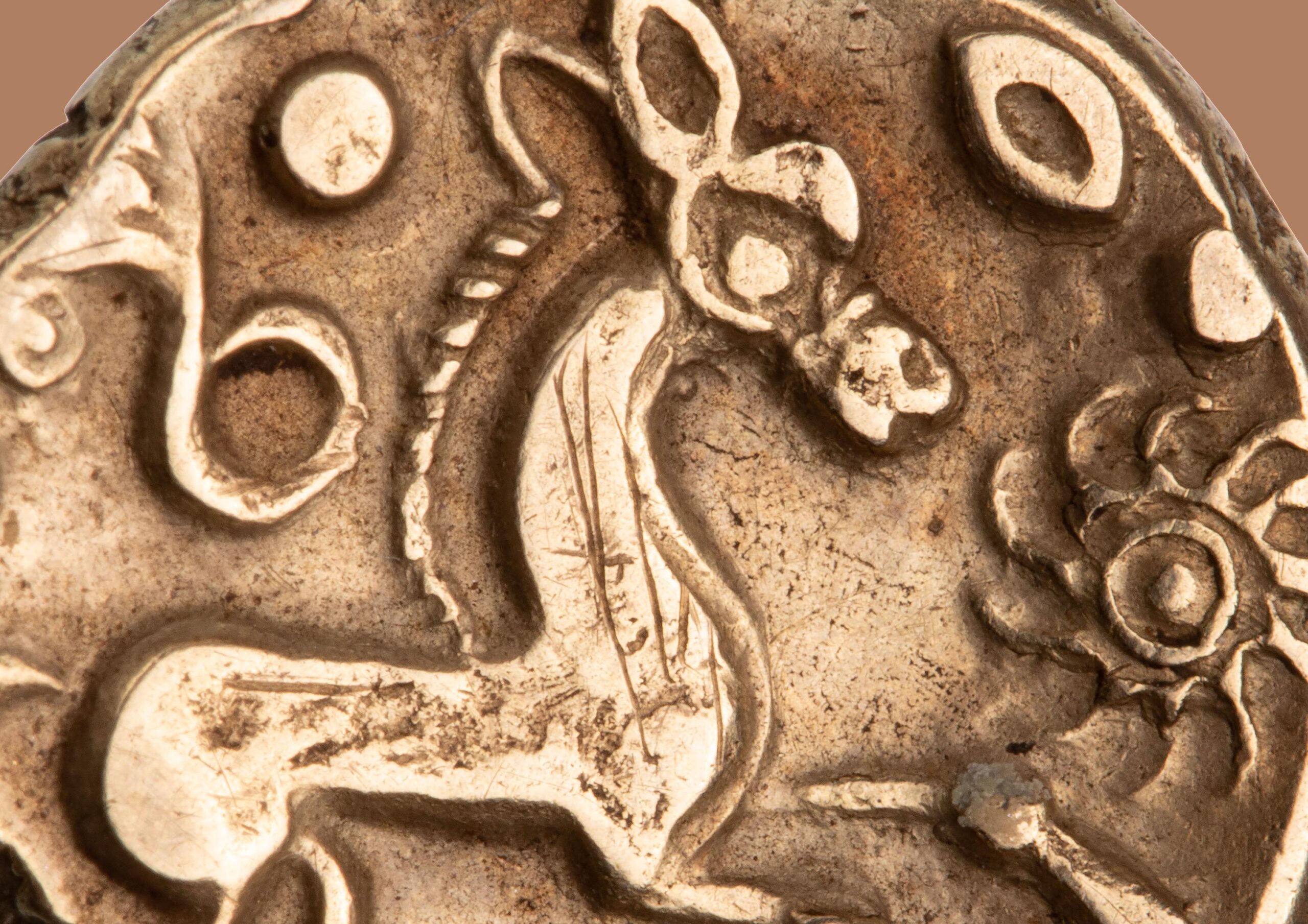Beads in the ANS Collection: Trade Objects or Jewelry?
In the world of potentially controversial topics, the idea that coins have a primary (if not singular) purpose—that is, as money—and were designed to facilitate trade, and continue to fill that role to the present day, is not exactly a hotly contested argument. Occasionally, coins are used as objects of adornment, whether suspended from clothing, incorporated into jewelry, etc. but suffice it to say, they are money first, and anything else second. There are other objects, however, that don’t as neatly fit the category of “money” yet are used to facilitate trade, and therefore their primary purpose is up for debate.
These items are sometimes called “trade objects”, “ethnographic money”, or the increasingly disused “primitive money”. What to rightly call these objects in the 21st century to distinguish them from “traditional” money without othering them is a topic too big to discuss here—and frankly, disentangling this linguistic conundrum is outside this author’s area of scholastic expertise—so for now we will use “trade objects” or, since we are focusing on one particular area in this blog post, “bead money” or simply “beads”.
In addition to what to call this group of “non-traditional” currency, there is the question of what came first, the bead, or the bead money? Almost certainly, beads as objects of adornment came first—it is difficult to imagine a universe where the concept of beauty or adornment was preceded by the more complex concept of trade or exchange between individuals or groups—the latter is, admittedly, a more complex concept than the former, and requires at least two interlocutors for trade to take place, whereas beauty is simply in the eye of the beholder. And indeed, some have argued that language itself came about because humans needed to trade, and if this is true, then it would follow that early modern humans created beads firstly because they found them attractive, and perhaps not long afterwards decided to leverage their beauty in order to acquire other necessities.
While the bead objects in the American Numismatic Society’s collection are not in excess of 30,000 years old, there is still a striking amount of variety in the collection, many of which are showcased below. All of these objects likely started out as articles of beauty and adornment, but as the desire for them increased, their primary purpose may have shifted to become currency or trade objects. In many instances, this probably happened on an even playing field, where both parties understood the relative scarcity of the beads they were trading, whereas, in other scenarios, one party may have held an advantage in production, and were able to produce beads more cheaply, then exchange them for other goods that would have otherwise been very difficult or expensive to obtain. Then again, isn’t that what money is all about?
The below objects—be they beads, bead money, trade beads, or simply bead-adjacent—represent just a few of many wonderful items in the Society’s collection, and are presented with limited commentary. Enjoy!

Many ancient seals, whether they are made of stone, clay, or glass, are often pierced, drilled, or holed for suspension. One imagines that this was done to avoid losing them, as they could be tied to a length of twine or leather, perhaps as a kind of lanyard. They could also be incorporated into jewelry such as a ring, combining beauty and functionality into one. This bead-like stone seal was chosen due to its resemblance to an ordinary stone bead, and perhaps after it outlived its usefulness as a seal, it became just that—a bead, or perhaps even a bead traded for something else.

“Dentalium” refers to any number of similar scaphopod mollusks, also called tusk shell or tooth shell mollusks. Although these types of animals are distributed worldwide, their use as trade objects (or rather, their shells as trade objects) is most closely tied with peoples from the Pacific Northwest of the United States, including the Yurok, Karuk (or Karok), and Hupa, as well as some peoples of the Great Plains (United States) and Canadian Prairies. Charles Opitz in An Ethnographic Study of Traditional Money suggests that only strung dentalium had any significant value, and that longer shells were preferred overall, as seen in the below example.



This ornate string is meticulously crafted from 12 dentalium shells, decorated with red cloth, with what looks at first to be a kind of sinew, but upon closer inspection, could be snakeskin or lizard skin, due to the small scales present. Opitz does not mention the Karuk specifically but claims that for the Yurok, the value of a house was three 12-shell strings, a good bride was worth ten strings, and a small boat, thirteen strings (Opitz, pp. 373–74).

Magnesite is a naturally-occurring mineral that when heated, changes to a ruddy orange color, as seen on this example. Although the Pomo made use of shell beads as well (often called wampum, but distinct from the wampum used by peoples of the Eastern Woodlands such as the Iroquois) these magnesite beads required much more labor to produce and were valued much more highly as a result, as much as 800 shell beads to one magnesite bead (Opitz, p. 56).

According to Opitz, these deep, cobalt blue beads were not originally from Russia, but were probably produced in Bohemia (now the Czech Republic) and made their way to Russia via Belgium and then China. Russian fur traders then used them in Alaska and abroad to trade for valuable pelts. There is also speculation that the beads may have originated with the Hudson Bay Company or the American Fur Company (Optiz, p. 62).

This unidentified string of shell money requires further research. It features small discs of shell beads in an alternating cream and grey pattern. Possibly Oceanic in origin.

These tiny cash coins are so small, they could easily be mistaken for beads, and in fact, when they were pulled for this blog post, that is exactly what the author thought these were! While the information present on these objects is sparse, the coins are likely anonymous or privately issued cash coins minted during turbulent periods of the Western Han Dynasty (202 BCE–9 CE) and are sometimes called elm seed money, but are more appropriately called “ban liang”. Like larger cash coins, these were easily strung together for ease of carrying, but unlike their larger cousins, one imagines that these had to be strung, or else they would be lost by their owner almost immediately. See here for a similar, single coin in the Society’s collection.

Cowrie shells are a top contender for the most common shell bead used in bead money worldwide, owing to the very wide distribution of the common money cowrie, or Monetaria moneta. Because it is readily found in the waters of the Indo-Pacific, bead money utilizing this type of cowrie shell is most commonly seen in Oceania, although large numbers of shells made their way into Africa as part of the slave trade, especially West Africa, with the shells often originating in the Maldives (Optiz, pp. 118–21). More research is needed to determine if this was a strand produced in Africa, or more locally in Oceania.

This short strand of red shell sapi-sapi money is quite scarce and was crafted from red Spondylus shells, otherwise known as spiny oysters. According to Optiz, a string of sapi-sapi was called wakisowa, and a belt was called kaipwesi on Rossel Island, where the shells were fashioned into discs, and then into strings and belts (Opitz, p. 294).

These beads were produced in the East African trading port of Kilwa Kisiwani in present-day Tanzania, and provide a fascinating look at the type of objects found on the maritime routes of the Silk Road. Similar groupings of loose beads can be found in the collection of The British Museum here and here.




